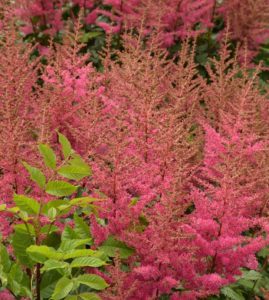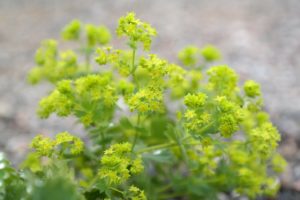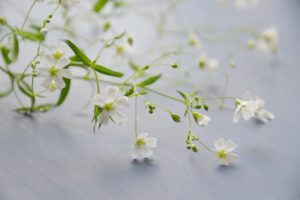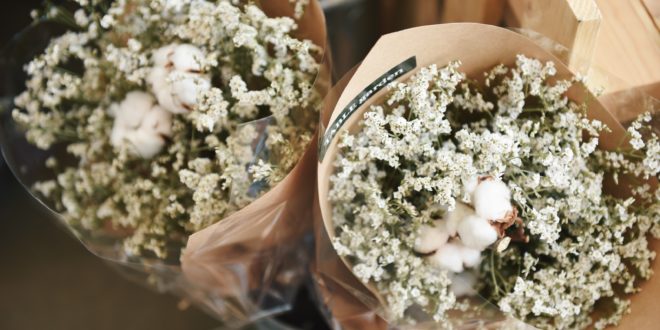Success with floral arrangements has never been my forte. So much so, that a bunch of blooms look better pushed into a vase of water and left unarranged! But my despair turned to delight when I discovered three easy-to-grow ‘filler’ flowers. Fillers occupy most of the space in a vase, and provide support to the blooms you really want to feature. All you need to do is pop your fillers into the vase of water and add the feature blooms, one at a time, positioning them as you go. It couldn’t be simpler – and the result is stunning every time.
‘Filler’ flowers
Astilbie
Astilbie are among the easiest of plants to grow. A perennial, they don’t need to be sown each year but expand to take up more space as the seasons go by – which makes them ideal to divide up and plant in other areas of the garden, or to give away to friends. What’s even better is this woodland plant’s ability to thrive is clayish soils, and to flower even in shady spots. And if your garden is not particularly free-draining – it’s not a problem for Astilibie which will carry on flowering regardless!

What makes this plant an ideal filler is the feathery, fern-like appearance of its flowers, and the fact that they come in colours that range from white to candy-floss pink, and from red and peach to purple. When popped into a vase, the flower stems act as a rigid framework that will hold up even top-heavy blooms such as roses and peonies.
Lady’s-mantle
This little beauty is the floral artist’s friend – so much so that even the professionals use her in bunches and bouquets. Going by the botanical name of Alchemilla mollis, her dainty flowers are a sweet lime green-yellow, and because there is space between each tiny bloom, the whole effect is a light-as-air arrangement. While you may choose to use the blooms alone as a filler, the grey-green foliage is also ideal as a framework for feature flowers.

Lady’s mantle is ridiculously easy to grow – in fact, in its natural mountain environment, it acts as a dense groundcover. Unfussy about soil type, it will thrive even in an uncared for patch of ground, and it doesn’t mind poorly drained soil or a little shade. Because it’s a perennial, you’ll always have this darling plant as your go-to filler for flower-arranging. Team delicate lady’s mantle with little pinks, sweet geums, and old-fashioned primroses. Miniature narcissus are also a winning combination.
Gypsophila
It’s an old-fashioned favourite that seems to have all-but-disappeared off the radar of modern gardeners, yet dainty Gypsophila is one of the best tools in the kit of the challenged floral artist. Also known as Baby’s Breath, the plant may be either perennial or annual depending on its variety, and it comes in both snow white and a precious pale pink.

Although general garden soil will suffice, Gypsophila prefers well-drained soil, but doesn’t take kindly to drying out. To encourage a second flush of blooms, cut back the first round of flowers (any you don’t use in fresh arrangments can be hung upside down in a warm, dark space to dry). It’s possible to grow your own plants from Gypsophila’s tiny seeds, but the fastest plan is to head to the garden centre for a couple of seedlings. While your plants may be perennial, they sometimes succumb to winter conditions in regions with harsh cold seasons. If this is likely to be a problem, dig up the plants in autumn, pot up, and grow on in a sheltered spot for replanting the following spring.










Join the Discussion
Type out your comment here:
You must be logged in to post a comment.